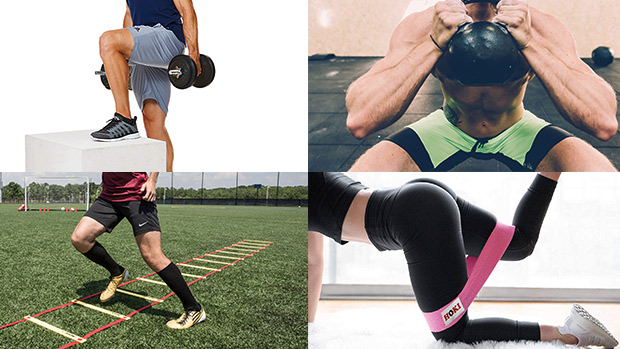You can take a great exercise, do it with good technique, and still misuse it. Check out these common exercises and approaches, and see how they're often done for the wrong reasons (or in the wrong ways). Know better so that you can do better.
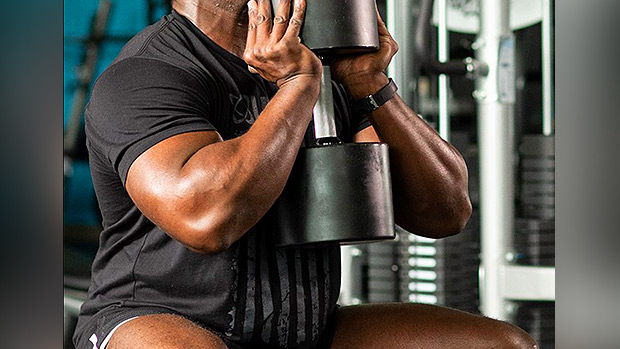
Goblet squats are a great squat variation for beginners or those with relatively weaker lower-body strength. They're excellent for learning and improving squat technique.
However, goblet squats are misused when they're done by stronger and more advanced lifters in attempt to train their lower body instead of other squat variations.
I often see people doing goblet squats holding a relatively heavy dumbbell or kettlebell. Since goblet squats are limited by the weight your arms can hold, it makes them a poor squat variation. Why? Because if you're trying to create a sufficient training stimulus in your lower body, it's no secret that your upper body is much weaker.
Now, since holding a heavy dumbbell or kettlebell at your chest does create a significant demand on the torso musculature, it makes sense to use goblet squats primarily as a "core training" exercise. However, it doesn't make sense for stronger and fitter folks to choose goblet squats over the multitude of other lower-body exercises that allow you to load up to maximize strength and size.
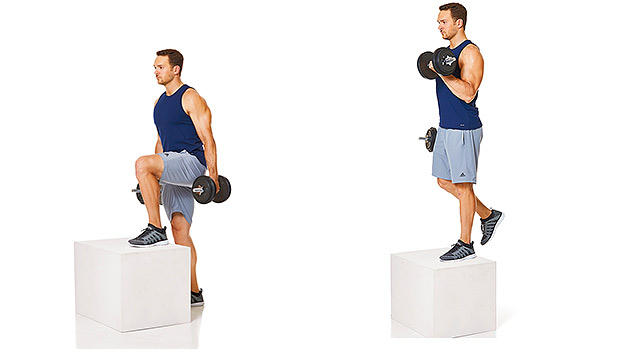
Here's another exercise that involves the lower body but is limited by the strength of the (weaker) upper body.
I get that people often will combine these two moves to kill two birds with one stone. But if you're able to curl the weight you're holding, it's not enough to sufficiently overload the legs. And you're limiting the amount of reps you do to what your arms can handle. So, one bird (the legs) maybe gets hit with a pebble, but not a rock big enough to knock it out of the air.
But there are certainly training contexts in which step-ups with a bicep curl fits well. It's great to use for beginners and those who don't yet possess much relative lower-body strength since the load is limited for the lower body anyway.
For the more advanced it's a different story. And while other trainers would say that these two exercise shouldn't be combined at all for the more seasoned lifters, there are actually two valid scenarios for combining them, and both happen to be higher-volume sets.
- Do a set of dumbbell step-ups (no curl) using a weight that's appropriate for your leg strength. Then, grab a lighter set of dumbbells that's appropriate for your biceps curl strength and perform dumbbell curls with a step-up. This would be like a drop set. Since your legs are tired from the previous set of heavier step-ups, it makes sense to use a lighter load as a drop set to continue banging out more step-ups reps. You're just adding a biceps curl at the top of each rep.
- Do step-ups with a biceps curl until your biceps fatigue. Then simply continue performing step-ups without the biceps curl at the top.

Hip bands are those rubber or fabric bands your put around your ankles or legs. They've been a staple tool used by both the physical therapists and trainers for over 20 years.
When used correctly, they're a fantastic training tool that can help both the hips and the shoulders (if you put them around your wrists). They're portable and affordable. That said, they're overused when people add them to almost every exercise they do.
You see this a lot among "booty-builders" who place a big training emphasis on hip abduction by constantly pushing the knees out against a hip band. They do this during a variety of exercises when it's not even necessary or beneficial. This doesn't exactly create a complimentary ratio to their regular hip adduction exercises. And the imbalance is risky.
Just a reminder – hip ABduction is what you do when pushing your legs apart. Hip ADduction is what you do when drawing them together.
Research on pro ice hockey players found that they were 17 times more likely to sustain an adductor muscle strain (groin injury) if their adductor strength was less than 80% of their abductor strength (1). Also, a systematic review (a study of studies) found that hip adductor strength was one of the most common risk factors for groin injury in sport (2).
It can put you at an increased risk of injury if you always use the hip band to constantly work your abductors while neglecting your adductors. Another problem is thinking of hip adductor exercises as a few throw-away sets you only occasionally do to mix it up.
And, no, exercises like wide-stance squats, single-leg squats, and a lunges don't activate the hip adductors as much as isolation exercises that focus primarily on the adduction movement (3,4).
That said, there are plenty of cool hip adduction exercises. Here's an awesome adductor move I often use:
The cool thing about these quadruped band hip adductions is that not only do you get a great stretch at the bottom position, but both hips are working to perform the action – not just the side the band is wrapped around. Also, this exercise places a nice demand on the shoulders and abs to control your torso as you move your hips.
Note: The video shows Sivan using an NT Loop instead of a traditional latex band. I designed them to be more comfortable and stable around the limbs, waist, or hips. But you can certainly use a traditional rubber loop band for this exercise.
To help you clearly see how this move with a cable or resistance band is commonly misused (usually by trainers), let's compare it to the one-arm cable press. To refresh your memory on what those look like, here's a pic of the Pallof press and a video of the one-arm cable press:
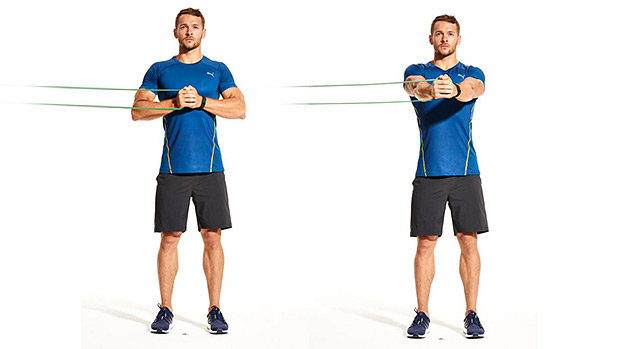
Although this anti-rotation exercise is a great option, it's misused when it gets overused (and overrated) by trainers who perceive it as a key "foundational" exercise.
The one-arm cable press places just as much, if not more, of an anti-rotation demand on your hips and torso musculature. For one thing, you can use heavier loads due to the split-stance position. And it gets more done than the Pallof press because it also involves the upper-body pushing musculature, plus the calves and hamstrings of the back leg, which prevent you from being pulled backward. It's also not as boring to perform as the Pallof press.
So, the one-arm cable press will get you all of the anti-rotation training benefits of the Pallof press and then some. And since it's a more interesting exercise, it'll be just as easy to learn and coach.
But for some reason a lot of trainers have their clients doing Pallof presses until they're blue in the face. They emphasize it without putting nearly the same training emphasis on exercises like the one-arm cable press. This is despite the fact that it's just as viable an exercise option, if not more so, to create an anti-rotation stimulus with an upright-torso.
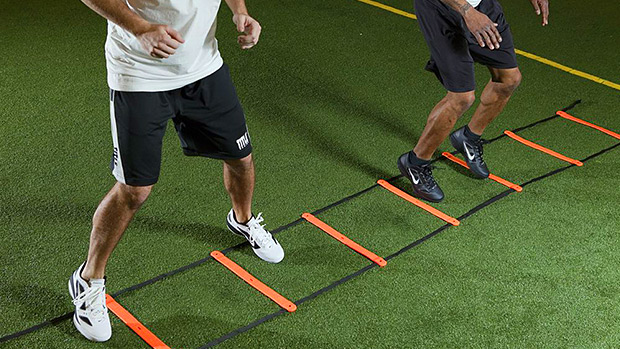
There are two studies on athletes showing ladder training was superior to plyometric training for improving agility performance on the Illinois Agility Run Test (5) and the T-test (6). These studies have their limitations, but they do falsify the common claim that ladders are nothing but a gimmick. The question is, in what context are ladder drills a good choice?
Within sports performance training, ladder drills can and do have their place. They're used as one component of a comprehensive speed, strength, and conditioning program. And in this case, you want the ladder drills to create training demands that fit the description of what agility is.
Typically, when coaches talk about speed, they're referring to how fast someone can run in a forward-directed, straight path of motion. So, speed training is more about improving the straight-ahead velocity of a person, also known as sprinting (5). On the other hand, agility has historically been related to the ability to display high levels of speed with the inclusion of directional changes (7).
That said, since agility can generally be defined by the ability to perform rapid, whole-body movement with change of velocity or direction in response to a stimulus while maintaining body control and minimizing a reduction in speed (5,8), it makes sense that the agility ladder drills chosen should reflect this description to elicit adaptations that can help improve agility.
Ladders get misused when the wrong ones are chosen. Think of the drills that make an athlete look like they're doing a river dance. They involve short, choppy steps while the torso remains virtually still. These are less likely to improve agility than ladder drills that involve more whole-body direction changes, since they don't create demands that fit the description of what agility is.
Additionally, even when someone does use the ladder to perform drills that involve more whole-body direction changes, the ladder can get misused when it becomes the centerpiece of someone's training over simply a small component of a program that involves working on relative strength, plyometrics, etc.
Now, what if you're not an athlete? Believe it or not, the ladder can make a great tool for general fitness training purposes too. How? Agility training has also been shown to offer general fitness and cognitive benefits.
In one study, 41 subjects undergoing military technical training were divided randomly into two groups for six weeks of training. One group participated in standard military physical training (PT) consisting of calisthenics and running. A second group duplicated the amount of exercise of the first group but used agility training consisting of ladder drills, hurdle crossings, dot/foot speed drills, and directional change drills (9).
The study found two things:
- The agility training protocol is as effective (or more) as standard military physical training (calisthenics and running) in enhancing physical fitness. The agility training group saw significant improvements within the AT group in VO2 max, Illinois Agility Test, visual vigilance, and continuous memory.
- Agility training is potentially more effective than standard military PT in enhancing specific measures of physical and cognitive performance, such as physical agility, memory, and vigilance.
The researchers suggest that agility training not only be incorporated into existing military physical training programs as a way to improve war-fighter performance, they also mentioned that it seems likely that the benefits of agility training they observed occur in various other populations.
Not to mention, the ladder provides a fun and interesting way to exercise for regular people, which will improve exercise adherence.
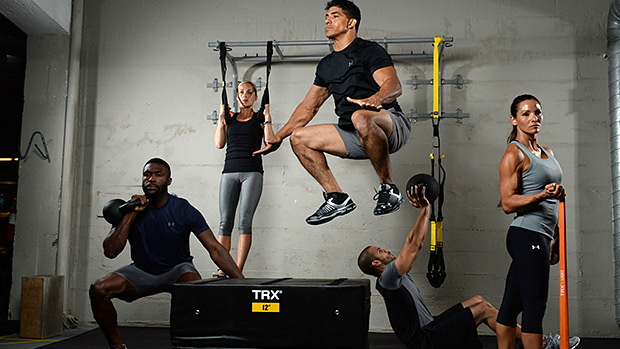
No, I don't mean International Chest Day! I've often joked that the worst day to be a personal training client is the Monday after their trainer has returned from attending a fitness conference. Usually their excitement to use some of the new exercises or training techniques they learned far exceeds their desire for accuracy.
They don't take some time (at least a week) to practice what they learned on their own or with their colleagues. This is an important step to review their conference notes, talk with other attendees, and evaluate the info by doing some fact checking.
Why is that important? Two reasons. First, to make sure that they apply what they learned accurately. And second, to make sure they don't apply things that, upon further investigation, are based on highly questionable claims.
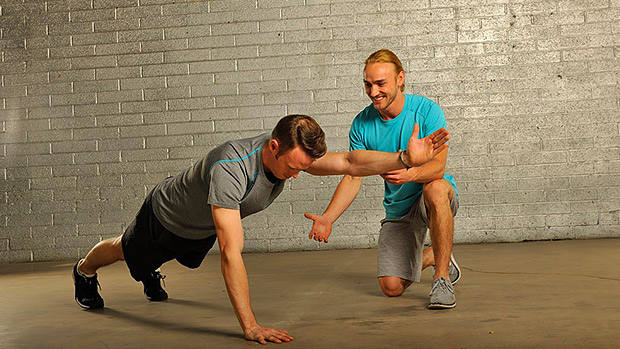
First, what does "corrective exercise" even mean? In 2007 I co-authoring a peer-reviewed and highly-referenced paper for an NSCA journal with Jason Silvernail, DPT and Ben Cormack. It's titled, "The Corrective Exercise Trap." Here are some key points on what the term "corrective exercise" does and doesn't mean from our paper (10):
Since providing constant guidance and feedback (client tailoring) on exercise execution – like telling a client to avoid allowing their knees to cave in when squatting – is "corrective" in nature, some may argue that a trainer has to be "corrective" in order to be effective. To them, corrective exercise and good personal trainer practices are essentially the same thing.
However, this is a self-defeating argument. If good personal trainer practices are by nature already "corrective," there's no need to use the term "corrective exercise" to begin with. It defeats the purpose of using the specialized term to describe practices that are already inherent to using good personal training practices.
By the same token, arguing that corrective exercise practices are just good personal training practices eliminates the need to give oneself the different professional designation of "corrective exercise specialist."
If a trainer can't draw the line between good personal training practices and corrective exercise practices (because it's an impossible gray area), then their argument is internally contradictory. They're using the distinct delineation of "corrective exercise" to describe and promote certain practices, which means they cannot then turn around and argue that these same practices exist in a gray area; therefore, they cannot be distinctly delineated.
A trainer can't have it both ways and remain logically consistent, because as soon as he uses a different and distinct delineation of corrective exercise, he'd be using practices that are different and distinct from good personal practices universal to the fitness professional.
- With the above realities in mind, corrective exercise practices can't be the same as, or exist in a gray area with, good personal training practices, and therefore are fundamentally different than general exercise practices because they each require a different decision-making process for exercise prescription.
- Corrective exercise is a system of exercise programming that attempts to correct performance of specified activities. They're based on a specific structured evaluation model to predict injury or poor performance. Good personal training practices correct performance based on accepted biomechanics and exercise physiology tailored to the client; whereas, corrective exercise corrects performance based on an evaluation model. While they both might be aiming to accomplish similar things, they're clearly different based on the performance standard.
- Since good personal training and corrective exercise practices both use exercises to improve performance, corrective exercise isn't as much about which exercises are performed, but about why a trainer prescribes certain exercises and why they take a particular programming direction.
- In short, the idea of corrective exercise is really about the particular evaluation procedure – the performance standard used to drive exercise prescription decisions.
Corrective exercise approaches are not necessarily bad or wrong. In the right context they can be a valuable concept, but they're misused when fitness pros end up making their training process more about a formalized evaluation procedure and less about well-established guidelines for good personal training.
As a result, not nearly enough actual strength and conditioning would get done to create the type of training effect needed to achieve the fitness, physique, or performance goals of the client or athlete.
Furthermore, the current body of scientific evidence (which consists of two systematic reviews) demonstrates that there's nothing special about using motor control exercises as a means to prevent or reduce back pain (11,12).
One study was a randomized, control trial that also involved subacute or chronic low-back pain patient subgroups. It found that motor control exercise and general exercise (aimed at improving the muscular strength of the lumbar and pelvic region and legs) appear equally effective at reducing LBP in the patient subgroup (13).
The researchers stated: "It's possible that the type of exercise treatment is less important than previously presumed; that the patient is guided to a consistent long-term exercise lifestyle is of most importance. The results of our study support previous findings that exercise in general, regardless of the type, is beneficial for patients with non-specific low back pain" (40).
Corrective exercise-based thinking is also misused when it injects unnecessary complexity into the mix. It creates confusion and prevents fitness pros from applying more simple training principles and practices – things that may be a more effective framework for improving people's health, fitness, physique, and performance.
- Tyler TF et al. The association of hip strength and flexibility with the incidence of adductor muscle strains in professional ice hockey players. Am J Sports Med. 2001 Mar-Apr;29(2):124-8. PubMed.
- Whittaker JL et al. Risk factors for groin injury in sport: an updated systematic review. Br J Sports Med. 2015 Jun;49(12):803-9. PubMed.
- Clark DR et al. Muscle activation in the loaded free barbell squat: a brief review. J Strength Cond Res. 2012 Apr;26(4):1169-78. PubMed.
- Dwyer MK et al. Comparison of lower extremity kinematics and hip muscle activation during rehabilitation tasks between sexes. J Athl Train. Mar-Apr 2010;45(2):181-90. PMC.
- Sethu S. Comparison of Plyometric Training and Ladder Training on Sprinting Speed, Vertical Explosive Power and Agility. International Journal of Recent Research and Applied Studies. 2014 Jn;1(15).
- Pratama NE. The Influence of Ladder Drills And Jump Rope Exercise Towards Speed, Agility, And Power of Limb Muscle. IOSR-JSPE. 2018 Feb;5(1):22-29.
- Holding RC et al. Responding to "change" in the sporting environment: a brief review of recent agility testing and training research. Journal of Australian Strength & Conditioning. 2013;21(3):21-29.
- Sheppard JM et al. Agility literature review: Classifications, training and testing. J Sports Sci. 2006 Sep;24(9):919-32. PubMed.
- Lennemann LM et al. The Influence of Agility Training on Physiological and Cognitive Performance. J Strength Cond Res. 2013 Dec;27(12):3300-9. PubMed.
- Tumminello N et al. The corrective exercise trap. NSCA Personal Training Quarterly. 2017;4(1):6–15.
- Saragiotto BT et al. Motor control exercise for acute non- specific low back pain. Spine (Phila Pa 1976). 2016 Aug 15;41(16):1284-1295. PubMed.
- Saner J et al. A tailored exercise program versus general exercise for a subgroup of patients with low back pain and movement control impairment: A randomized controlled trial with one-year follow-up. Man Ther. 2015 Oct;20(5):672-9. PubMed.

